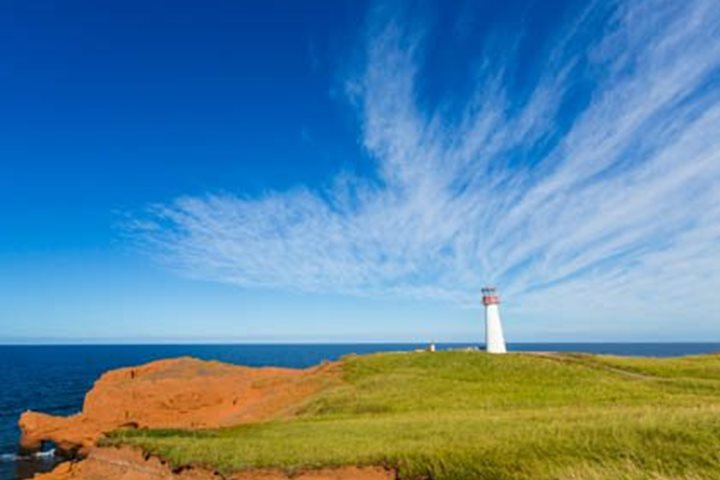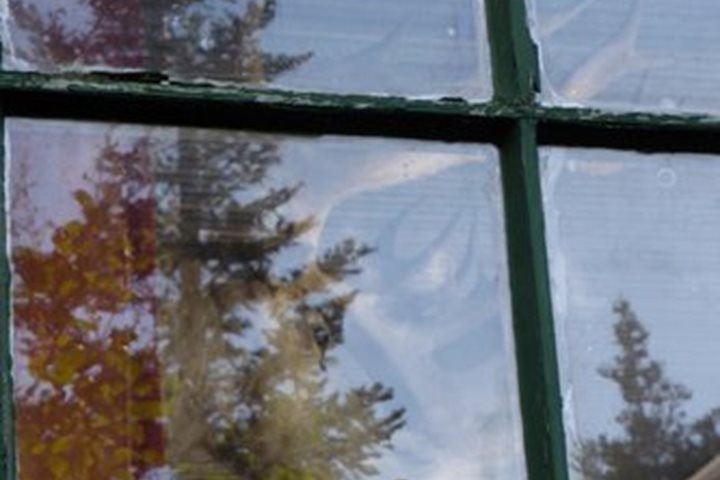The early efforts of British explorers searching for a Northwest Passage brought back news of heathen Aborigines called Esqimaux living in the Arctic under harsh and primitive conditions, and European missionary societies had found a new calling. The Moravian Missionary Society originated in Moravia (now a province in the Czech Republic), but had an extensive membership that reached into Germany, Denmark, and Britain…its German faction rose to the challenge by sending missionaries to Labrador in 1771.
This morning, we visited Hebron, one of eight mission stations established by the Moravians along the Labrador coast in the 18th and 19th centuries. Hebron Mission was founded in 1837, at a Hudson’s Bay Company trading site, and at 58º12'N it was the northernmost settlement in Labrador until it was closed down in 1959. At its height, the community had a population of about 150 Inuit, but today it is mostly in ruins. Even so, it is the best preserved of the old Moravian efforts and the Canadian Parks authority is now in the process of restoring the historic church meeting house and school. The other remaining structures, including the Hudson’s Bay Company Office and Blubber House, are probably too far gone to save.
The evangelical missionaries believed they were active participants in the Divine Plan and they surely came with the best intentions, bringing with them Christianity in the form of Protestantism, literacy, agriculture, Western medicine, and ironically, Western diseases that the Western medicine could not control. The close living quarters and hard life exposed the community to periodic outbreaks of smallpox, measles, whooping cough, and influenza. The flu epidemic of 1918 killed about one-third of the entire 1,200-member Inuit population of Labrador, as well as many missionaries. Tuberculosis was a chronic problem, however, and eventually led to the decision to abruptly and unceremoniously close down the mission and evacuate the Inuit population in 1959.
Promises by the government to aid in resettlement and look after them went unfulfilled and many of them suffered great hardships in the ensuing years. Their subsistence economy had ended long before, so the sudden need to live off the land was especially difficult for some. The caretakers of the site, Joshua and Jenny (a married couple), showed us around and told us about the personal effects all this had upon their respective families. There is an interesting monument above the church with three bronze plaques, including one that quotes the official 2005 Newfoundland and Labrador Government heartfelt apology for the forced evacuation and subsequent abandonment of the Hebron Inuit, as well as another one that quotes a heartfelt statement of forgiveness by the Hebron Inuit leadership.
Some of us went for a hike up into the rocky hills inland from the mission, but we all had a chance to wander the area and admire the beautiful fireweed in bloom, as well as willows, birches, Labrador tea plants, heather, and prodigious quantities of ripe crow berries, blueberries, and partridge berries. Isolated from the main settlement region, we came upon two cemeteries…one apparently was reserved for Europeans, whereas the larger one, lower down and closer to the water, must have been for the Inuit. There was much poignancy in noting the early ages of death recorded on some of the gravestones that were still readable, especially while trying to imagine the suffering caused by the common mortal ailments that afflicted this place. Although the surrounding landscape was dramatic, rugged, austere, and photogenic, the mission site itself had an almost palpable sadness to it.
In the middle afternoon, we transited the wonderfully-named Mugford Tickle waterway that separates Mugford Island from the Labrador mainland. A tickle is any narrow strait that has dangerous submerged rocks and/or treacherous rocky shorelines that almost touch the hull of the vessel as you carefully sail through. Although it was drizzly and foggy, we managed to spot several black bears roaming along the steep slopes of the mountain sides.







